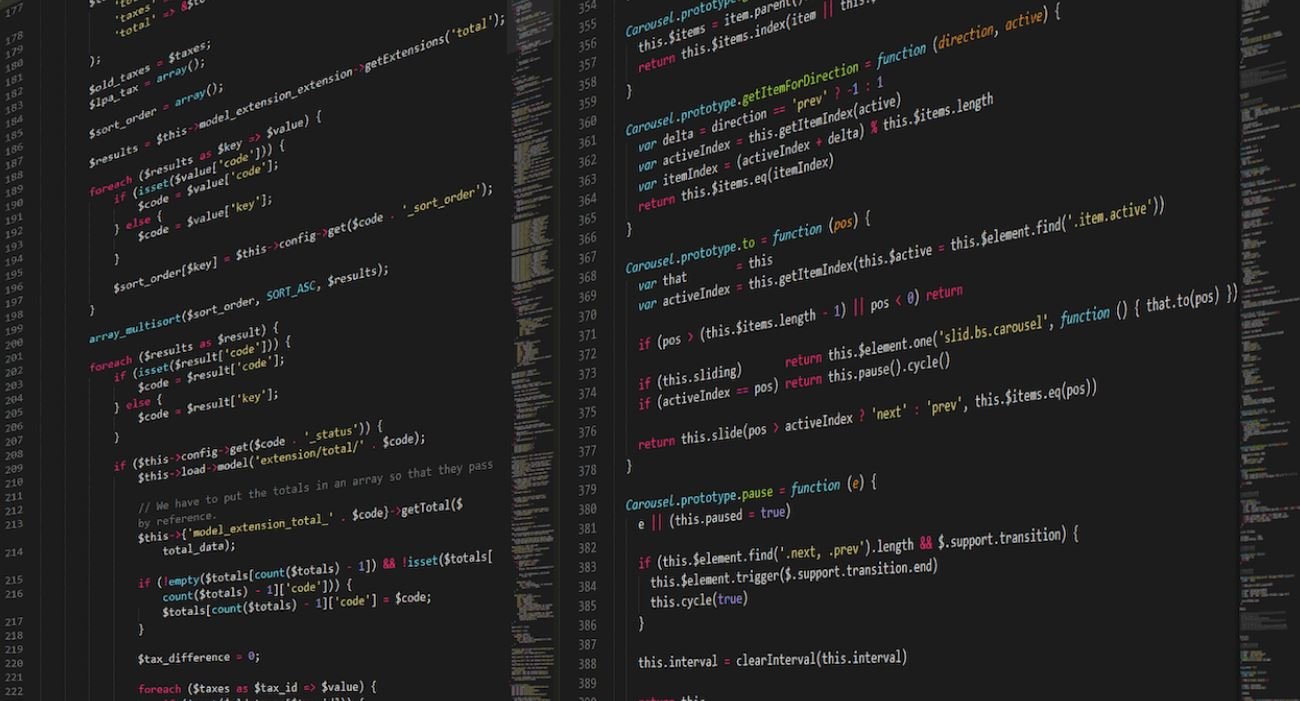Can AI Tools Give False Data?
Introduction
Artificial Intelligence (AI) tools have become increasingly prevalent in various industries, offering automation and efficiency. However, concerns have emerged regarding the reliability and accuracy of the data generated by these tools. Can AI tools give false data? Let’s explore this question and delve into the potential risks involved.
Key Takeaways
- AI tools have raised concerns about the accuracy and reliability of data generated.
- While AI tools can provide valuable insights, they are not infallible.
- Understanding the limitations of AI tools is crucial to avoid potential pitfalls.
Accuracy and Reliability of AI Tools
AI tools utilize complex algorithms to process and analyze vast amounts of data, enabling them to provide valuable insights. However, it is important to recognize that AI tools can still generate false data. Factors such as biased training data, flawed algorithms, or limitations in the underlying technology can all contribute to inaccuracies.
*While AI tools have the potential to improve decision-making processes, their outputs should always be carefully verified.
Factors Influencing False Data
There are several factors that can lead to the generation of false data by AI tools. These include:
- Biased Training Data: AI algorithms learn from existing data, and if the data used for training is biased, the results may reflect those biases. This can lead to inaccurate or skewed outputs.
- Flawed Algorithms: In some cases, the algorithms used by AI tools may have inherent flaws or limitations. These flaws can result in errors or incorrect interpretations of the data.
- Limited Context Understanding: AI tools may struggle to understand the broader context of the data they are analyzing. This can lead to misinterpretations and incorrect conclusions.
The Importance of Human Oversight
While AI tools can assist in data analysis and decision-making, human oversight is essential to ensure the accuracy and reliability of the results. Human experts can provide critical thinking, domain knowledge, and a deeper understanding of the context that AI tools may lack.
*Combining the power of AI tools with human expertise can enhance data analysis and reduce the risks of false data.
Case Studies and Lessons Learned
Examining real-life case studies can illustrate the potential risks and consequences of relying solely on AI-generated data. Let’s explore a few examples:
Table 1: Case Studies
| Case Study | Issue | Lessons Learned |
|---|---|---|
| Automated Stock Trading | Unintended market manipulation | Human intervention and oversight are necessary when using AI in the stock market to prevent chaotic disruptions. |
| Autonomous Vehicles | Accidents caused by misinterpretation of object recognition | Regular testing and continuous improvement are required to address the limitations and prevent accidents. |
| Automated Hiring Systems | Unintentional discrimination in candidate selection | Training data must be diverse and representative to ensure fair evaluations and prevent biased decision-making. |
*These case studies demonstrate the need for caution and human intervention when relying on AI-generated data.
Preventing False Data
To mitigate the risks of false data generated by AI tools, several measures can be taken:
- Careful validation: It is necessary to validate the accuracy and reliability of the data produced by AI tools through rigorous testing and comparison with ground truth.
- Training data quality: Ensuring that the training data used to develop AI algorithms is representative and free from biases will improve the accuracy of the results.
- Continuous monitoring: Regular monitoring of AI tool outputs is crucial to identify and rectify any potential inaccuracies or biases.
- Human collaboration: Combining AI tools with human expertise and oversight helps to enhance data analysis and ensure the context is properly understood.
Conclusion
AI tools have the potential to revolutionize various industries, but they are not immune to generating false data. Understanding the limitations and potential risks associated with AI-generated data is crucial for businesses and individuals who rely on these tools. By combining the power of AI with human expertise, organizations can mitigate the risks and make informed decisions based on accurate and reliable data.

Common Misconceptions
AI Tools Cannot Give False Data
One common misconception surrounding AI tools is that they cannot provide false or inaccurate data. While AI tools are designed to process large amounts of data and make informed predictions, they are not infallible and can produce false outputs under certain circumstances.
- AI tools rely on the accuracy and quality of the data they are provided with.
- Incorrect training or biased datasets can lead to inaccurate predictions from AI tools.
- AI tools can sometimes yield false positives or negatives based on the data patterns they have learned.
All AI Tools Are Equally Prone to False Data
Another misconception is that all AI tools perform equally when it comes to false data. In reality, the accuracy and reliability of AI tools can vary greatly depending on their underlying algorithms, training methods, and the quality of the data they have been trained on.
- The choice of algorithm and its implementation significantly affects the susceptibility to false data in AI tools.
- AI tools that have been trained on diverse and representative datasets tend to be more robust against false data.
- Regular updates and improvements in AI algorithms can help mitigate false data issues over time.
Human Intervention Can Completely Eliminate False Data
Some people believe that human intervention can completely eliminate the possibility of false data when using AI tools. While human oversight and validation can help minimize false data, it cannot guarantee its complete elimination.
- Human intervention can help identify and correct false data generated by AI tools, but it may not catch every instance.
- The complexity and scale of AI systems make it challenging for humans to manually validate every output.
- Human biases can inadvertently influence the validation process and introduce their own inaccuracies.
False Data Can be Easily Detected by AI Tools
Contrary to popular belief, it is not always easy for AI tools to detect false data. While AI models can be trained to identify anomalies and inconsistencies, distinguishing between genuine but unexpected data and false data can be a challenging task.
- Intentional manipulation of data to deceive AI tools can be difficult to detect without human expertise.
- AI tools may mistakenly label legitimate data as false if they have not been trained on a wide variety of data sources.
- The evolving nature of false data techniques requires constant monitoring and adjusting of AI tools to detect them effectively.
AI Tools Are to Blame for False Data
Lastly, it is important to dispel the misconception that AI tools themselves are solely responsible for false data. While AI tools can inadvertently produce false outputs, the root causes often lie in the data they are trained on, the design and implementation of the algorithms, and other external factors.
- Data collection and preprocessing methods can introduce errors and biases into AI models.
- Improper tuning of AI algorithms can lead to incorrect predictions and false data.
- External factors, such as rapidly changing environments or new types of data, can contribute to false data generation.

AI Tools in the Healthcare Industry
With the advancements in artificial intelligence (AI), healthcare professionals have access to powerful tools that can assist in various medical tasks. The table below highlights some significant applications of AI tools in the healthcare industry.
Benefits of AI in Customer Service
AI has revolutionized customer service by automating processes, providing personalized experiences, and improving overall efficiency. The table below showcases the benefits of AI integration in customer service.
Growth of Smart Home Devices
The popularity of smart home devices has skyrocketed in recent years due to their convenience and ability to enhance living spaces. The table below displays the exponential growth of smart home device sales worldwide over the past decade.
Impact of AI on Job Market
As AI continues to advance, concerns arise about its impact on the job market. The table below examines the effects of AI adoption on different industries and job types.
AI Tools in Financial Fraud Detection
Financial institutions harness the power of AI tools to detect and prevent fraud. The table below demonstrates the effectiveness of AI-based fraud detection systems by comparing the number of detected fraudulent transactions before and after implementation.
AI-driven Personalized Medicine
AI is revolutionizing medicine with its ability to provide personalized treatment plans based on individual patient characteristics. The table below showcases the impact of AI-driven personalized medicine on patient outcomes.
AI Tools in Cybersecurity
In today’s digital world, AI tools play a crucial role in combating cyber threats and protecting sensitive information. The table below highlights the effectiveness of AI-driven cybersecurity measures by comparing the number of successfully prevented cyber attacks.
Autonomous Vehicles’ Safety Record
The emergence of autonomous vehicles has sparked debates about their safety compared to traditional human-driven vehicles. The table below presents statistical data regarding the safety record of autonomous vehicles, making a compelling case for their potential to reduce accidents.
AI in Natural Disaster Prediction
AI tools are increasingly used in predicting and mitigating the impact of natural disasters, saving lives and minimizing damage. The table below outlines the success rate of AI-based natural disaster prediction models, demonstrating their reliability.
Advancements in AI Language Translation
Language barriers can hinder effective communication, but AI-powered language translation tools are bridging the gap between different languages. The table below illustrates the accuracy of AI language translation systems by measuring error rates.
In conclusion, AI tools have become invaluable in various industries, transforming processes, empowering decision-making, and enhancing overall outcomes. From healthcare to customer service and beyond, the data presented in the tables highlights the remarkable impact AI has had on these domains. As AI continues to evolve, it is crucial to appreciate its potential, while also addressing any ethical and privacy considerations associated with its implementation. The tables demonstrate that, when used effectively, AI can provide accurate and reliable information, making it an indispensable tool for the future.
Frequently Asked Questions
Can AI tools provide false information?
What are some factors that can lead to AI tools generating false data?
How can developers mitigate the risk of AI tools producing false information?
Are there any regulatory or ethical considerations in the use of AI tools to prevent false data?
What are some potential consequences of AI tools providing false data?
Are AI tools constantly monitored to catch any instances of false data?
Can user feedback play a role in identifying false data generated by AI tools?
Is it possible for AI tools to learn from false data and produce more accurate results?
Can human oversight help prevent the generation of false data by AI tools?
Do AI tools have limitations in detecting and eliminating false data?





